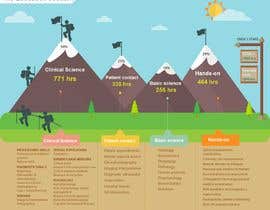Address Pain In The Back By Identifying The Daily Routines That Might Be Adding To It; Minor Adjustments Can Lead The Way To A Life Without Pain
Address Pain In The Back By Identifying The Daily Routines That Might Be Adding To It; Minor Adjustments Can Lead The Way To A Life Without Pain
Blog Article
Article By-Snyder Rosales
Maintaining correct stance and avoiding usual risks in daily tasks can substantially affect your back health. From how you rest at your desk to just how you raise heavy objects, little modifications can make a large distinction. Picture a day without the nagging neck and back pain that hinders your every move; the option could be simpler than you think. By making a few tweaks to your everyday routines, you could be on your way to a pain-free presence.
Poor Position and Sedentary Lifestyle
Poor posture and a sedentary way of living are 2 significant factors to pain in the back. When you slouch or inkling over while sitting or standing, you placed unneeded strain on your back muscular tissues and spinal column. This can result in muscular tissue discrepancies, stress, and eventually, persistent neck and back pain. Furthermore, sitting for extended periods without breaks or physical activity can compromise your back muscles and result in tightness and discomfort.
To deal with bad stance, make an aware effort to rest and stand up directly with your shoulders back and aligned with your ears. Keep in mind to maintain your feet flat on the ground and prevent crossing your legs for extended durations.
Incorporating routine extending and enhancing workouts right into your everyday regimen can also aid enhance your position and ease pain in the back associated with a sedentary way of life.
Incorrect Training Techniques
Inappropriate lifting methods can dramatically contribute to neck and back pain and injuries. When https://www.healthcentral.com/slideshow/9-best-treatments-sciatic-nerve-pain raise heavy things, bear in mind to bend your knees and utilize your legs to raise, instead of counting on your back muscular tissues. Avoid turning your body while training and keep the things close to your body to decrease strain on your back. It's essential to keep a straight back and stay clear of rounding your shoulders while raising to stop unneeded pressure on your back.
Always evaluate the weight of the item prior to lifting it. If it's too hefty, ask for help or usage devices like a dolly or cart to carry it securely.
Remember to take breaks throughout lifting tasks to offer your back muscle mass a possibility to relax and protect against overexertion. By carrying out appropriate training strategies, you can protect against pain in the back and reduce the danger of injuries, ensuring your back remains healthy and strong for the long-term.
Absence of Routine Exercise and Stretching
An inactive way of living devoid of routine workout and extending can dramatically contribute to back pain and pain. When you do not engage in physical activity, your muscle mass become weak and inflexible, leading to poor pose and boosted stress on your back. Routine workout assists strengthen the muscular tissues that sustain your spine, improving security and reducing the risk of neck and back pain. Incorporating stretching into your routine can also enhance adaptability, protecting against rigidity and discomfort in your back muscles.
To prevent lower back pain on both sides and back pain brought on by an absence of exercise and extending, go for a minimum of 30 minutes of modest exercise most days of the week. Consist of https://chiropractic-treatment-fo61727.techionblog.com/30688143/a-comprehensive-guidebook-for-selecting-the-most-effective-pillow-to-alleviate-neck-pain that target your core muscle mass, as a strong core can help ease stress on your back.
Additionally, take breaks to extend and relocate throughout the day, particularly if you have a desk task. Easy stretches like touching your toes or doing shoulder rolls can aid alleviate stress and avoid pain in the back. Prioritizing routine exercise and extending can go a long way in preserving a healthy and balanced back and lowering pain.
Conclusion
So, keep in mind to stay up straight, lift with your legs, and remain active to avoid back pain. By making straightforward adjustments to your everyday practices, you can prevent the discomfort and constraints that include pain in the back. Take care of your spinal column and muscular tissues by practicing excellent pose, appropriate lifting techniques, and normal workout. Your back will thank you for it!
